These delicious gluten-free sourdough English muffins are soft, flavorful, and crispy on the outside. For more recipes like that check out my gluten-free sourdough discard recipes collection!
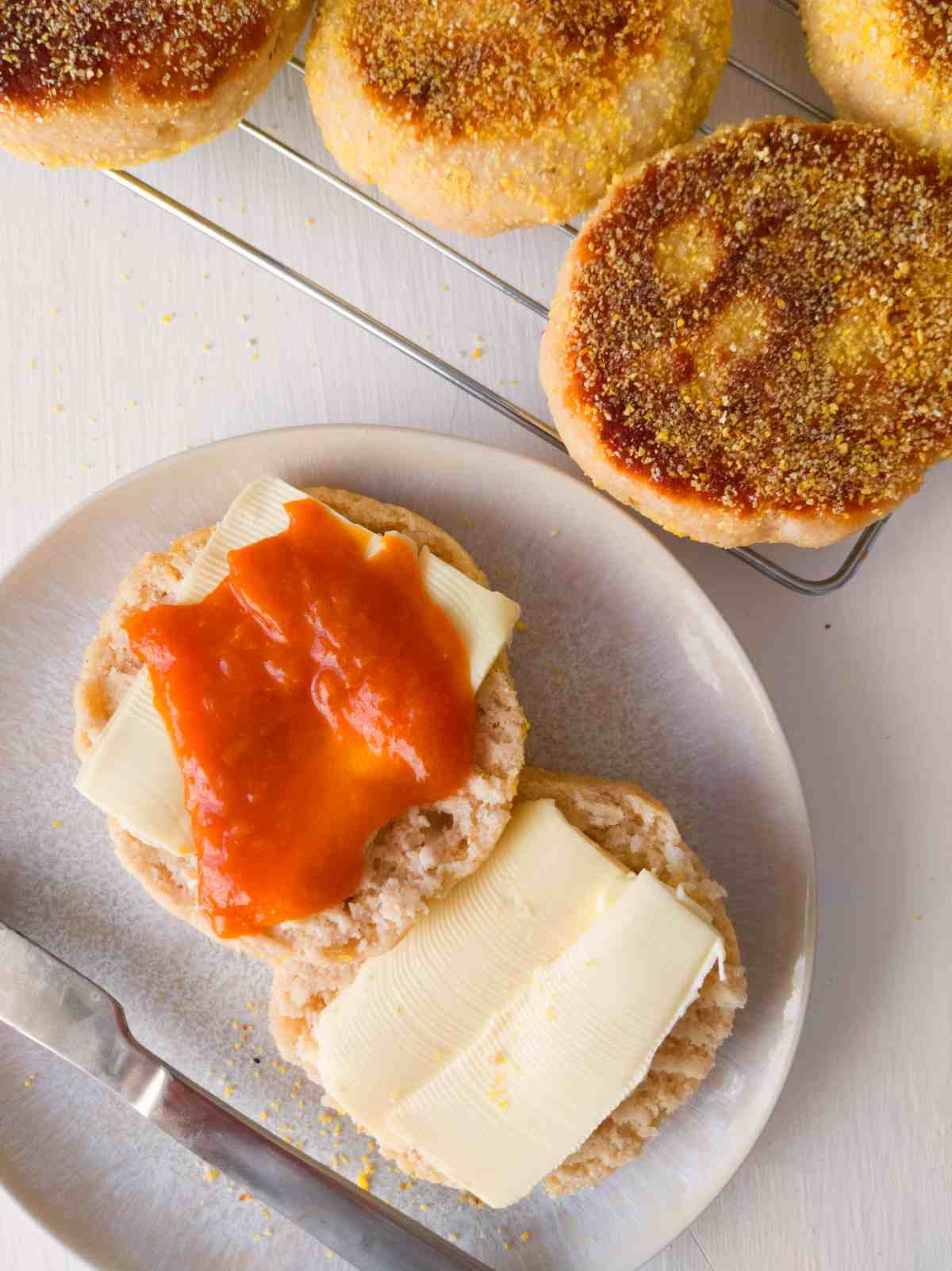
Jump to:
Why You Will Love This Recipe
- Flavor. These gluten-free English muffins are so good, I couldn't stop snacking on them even without toppings!
- Texture. The muffins are not dense, yet, not too crumbly. They are soft and airy just like the original English muffins!
- Make-ahead recipe. Make and freeze these English muffins to use later!
What Is A Sourdough Starter?
A sourdough starter is a wild yeast that is used to leaven sourdough bread. I use a brown rice gluten-free sourdough starter and I love baking my own gluten-free vegan sourdough bread!
All you need to make a starter is flour, water, and a little patience. Then, you can use it in bread or recipes like this one! Or you can make sourdough pancakes, pizza dough, or even chocolate chip cookies! For hamburgers, you can check out my gluten-free dinner rolls or fermented hamburger buns.
New to gluten-free sourdough? Watch my 16-minute video tutorial for beginners!
Ingredients
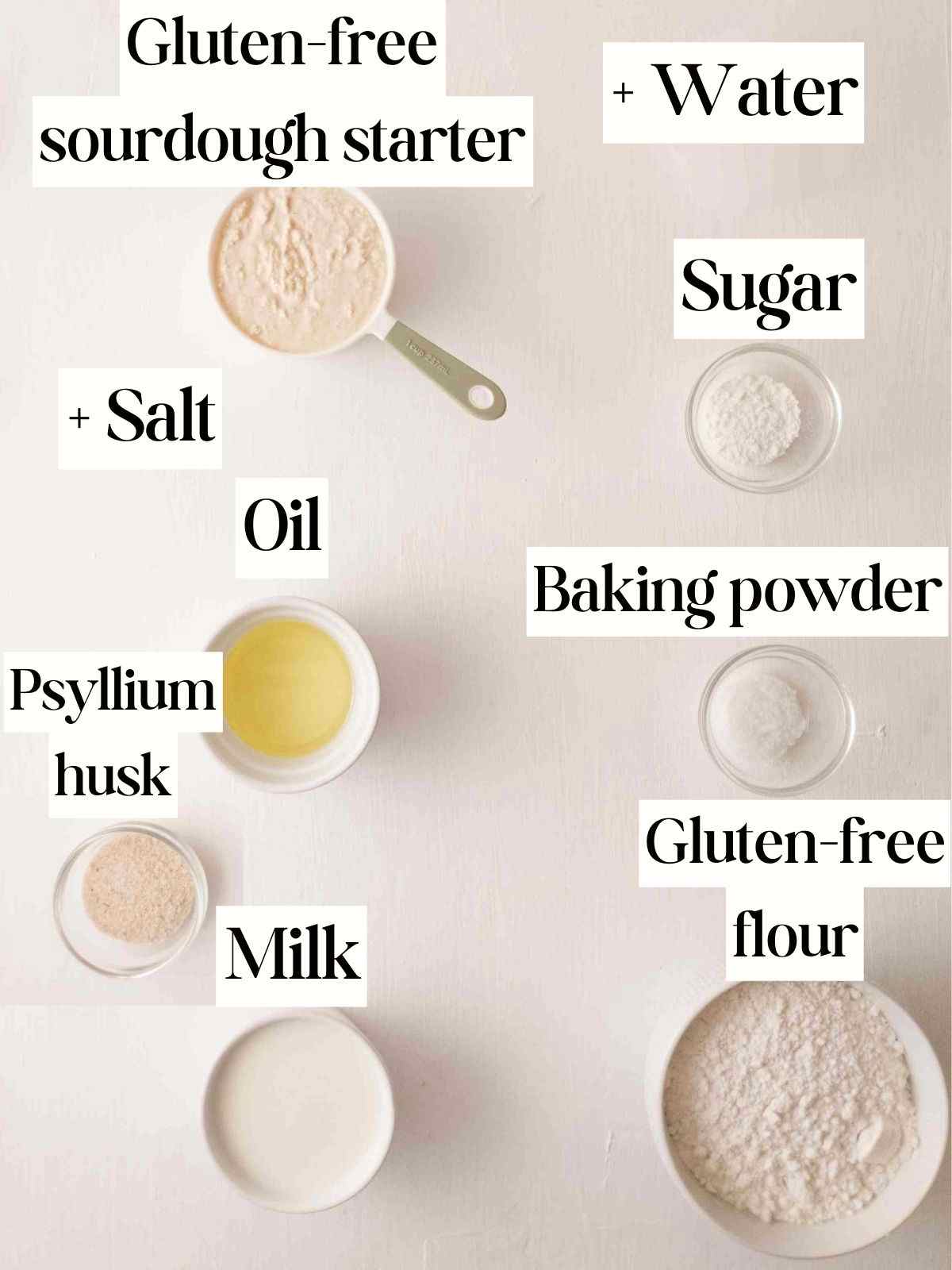
GF sourdough starter - use a mature starter, meaning it was fed, then rose to its full capacity, and is still bubbling. You can also use starter discard with an additional 7g of dry active/instant yeast or 20g of fresh yeast.
GF flour - I am using my homemade gluten-free flour mix without potato starch but other GF flour will work, too. Just keep an eye on the texture of the dough, if it is too runny, you can add a bit more of your flour since it might be more absorbent than mine. The dough is supposed to be sticky but workable with greased hands!
Milk - use any milk, plant-based or not.
Oil - I used sunflower oil and it works great but other types should work, too!
Psyllium husk - either whole husks or powder will work well in this recipe.
Baking powder - check the package to make sure it is gluten-free.
Substitutes & Variations
You can use any oil or type of milk. Most gluten-free flour blends should work with this recipe!
You can add cinnamon and raisins for a sweeter version of these English muffins or you can add some jalapenos to the dough for a spicy version!
Step-by-Step Instructions
Step 1
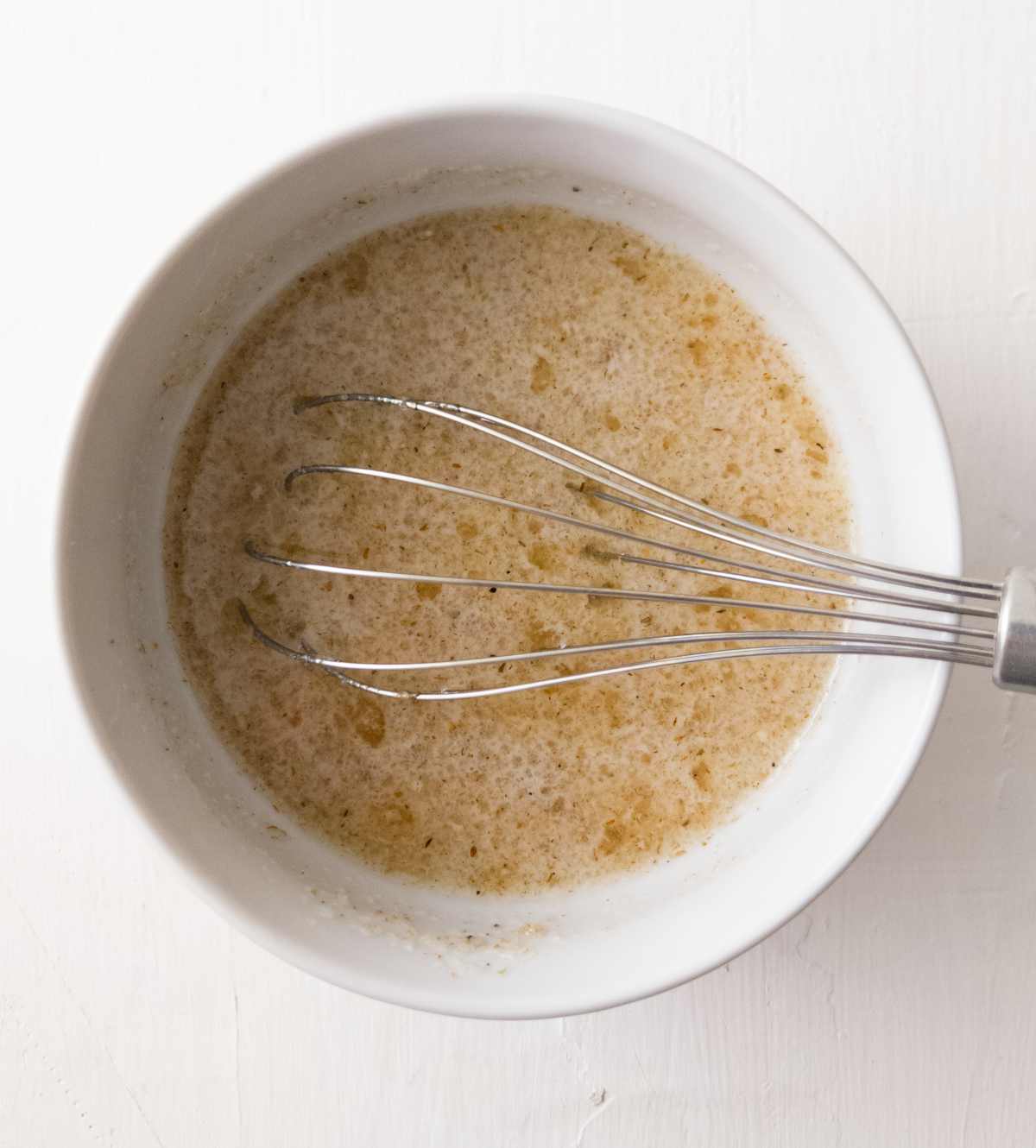
In a medium-sized bowl combine psyllium husk, milk, water, oil, and sugar. Whisk to combine and set aside to let the psyllium gel form.
Step 2
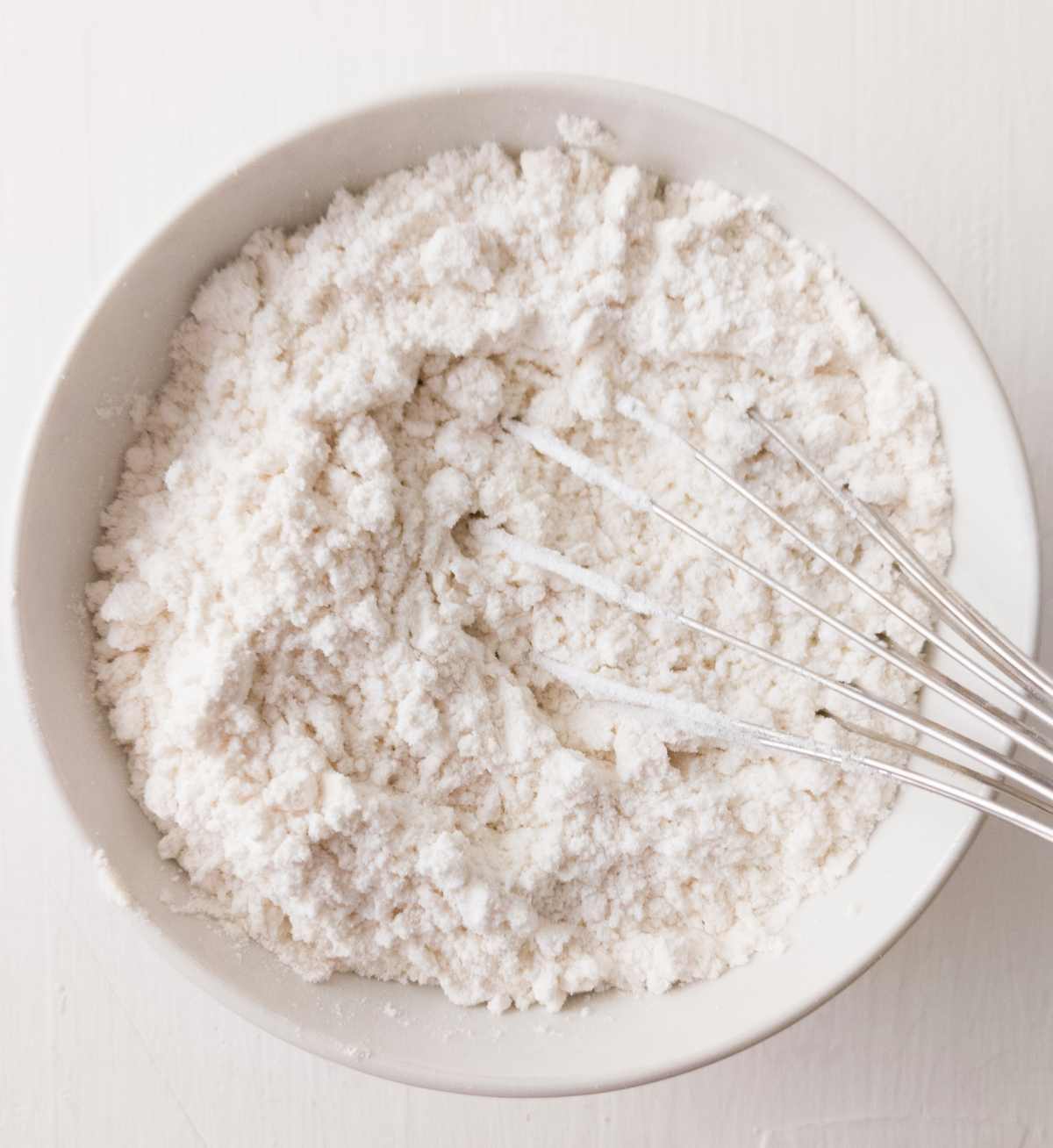
Combine the dry ingredients in a separate bowl and mix to incorporate.
Step 3
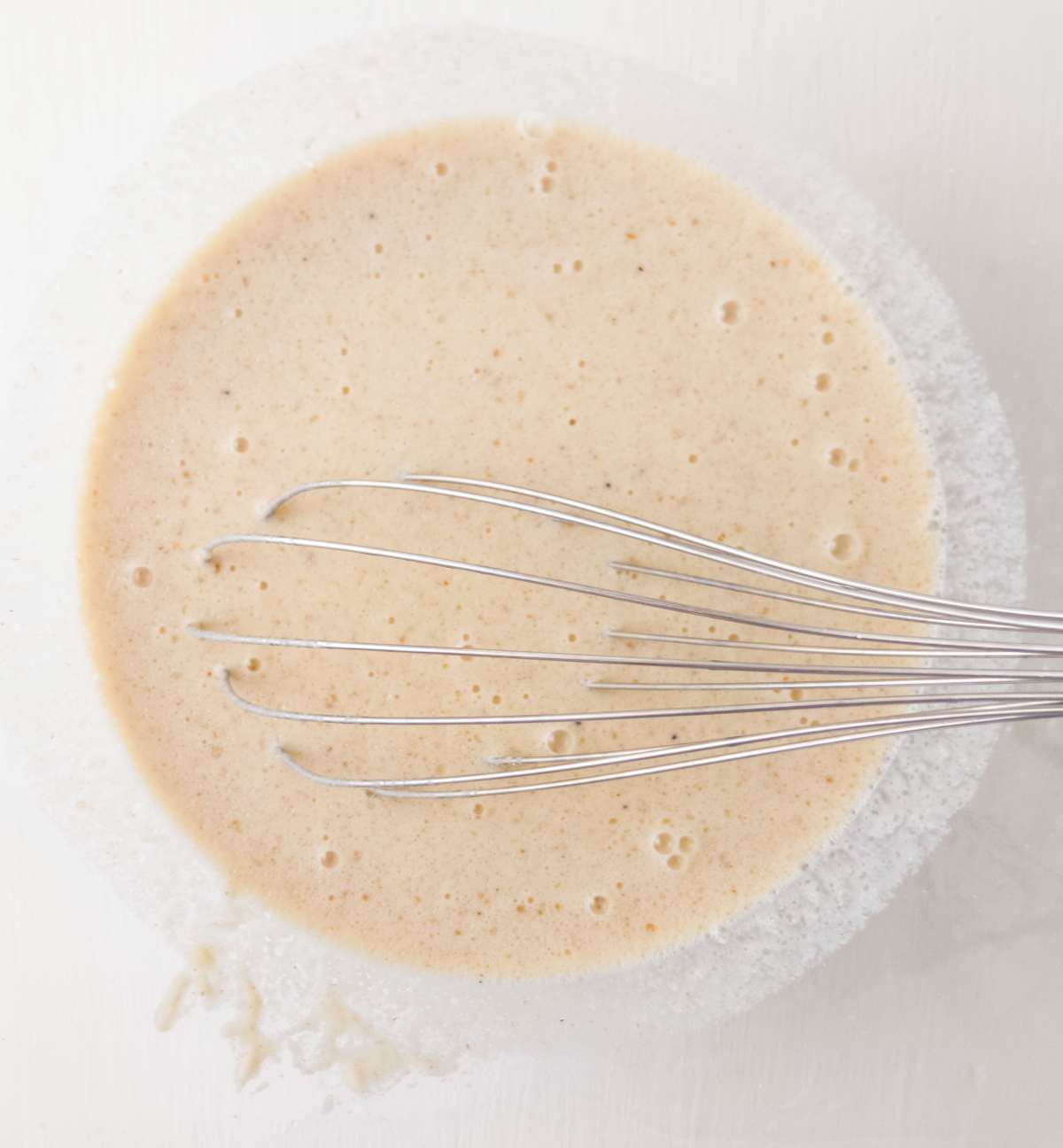
Once psyllium gel has formed (1-2 minutes after you mixed it), add the sourdough starter, and stir to incorporate. If you are using starter discard, add 7g of instant yeast (not active dry).
Step 4
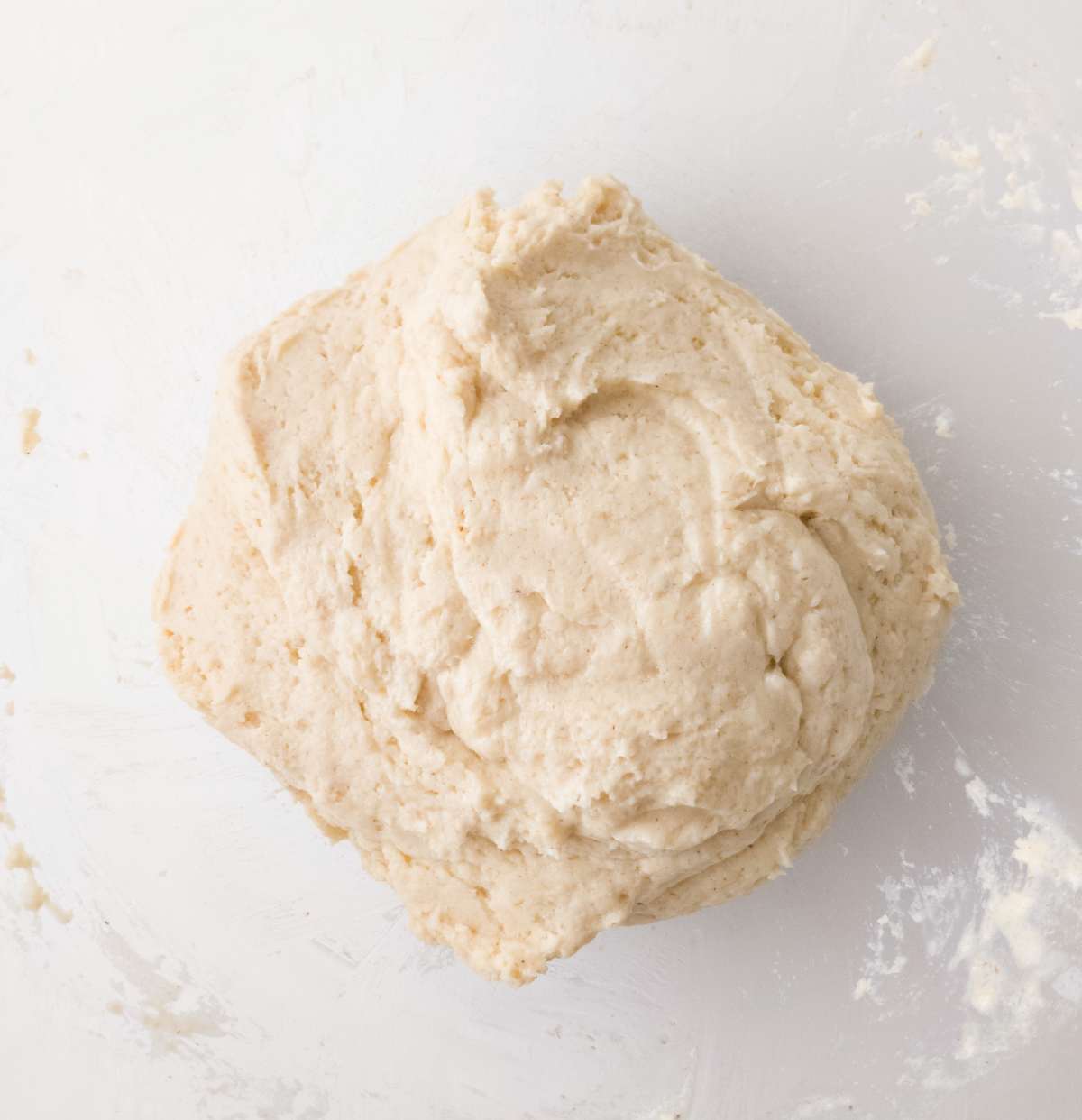
Add the dry ingredients to the wet ingredients and mix using your hands or an electric mixer with the dough hooks.
Step 5
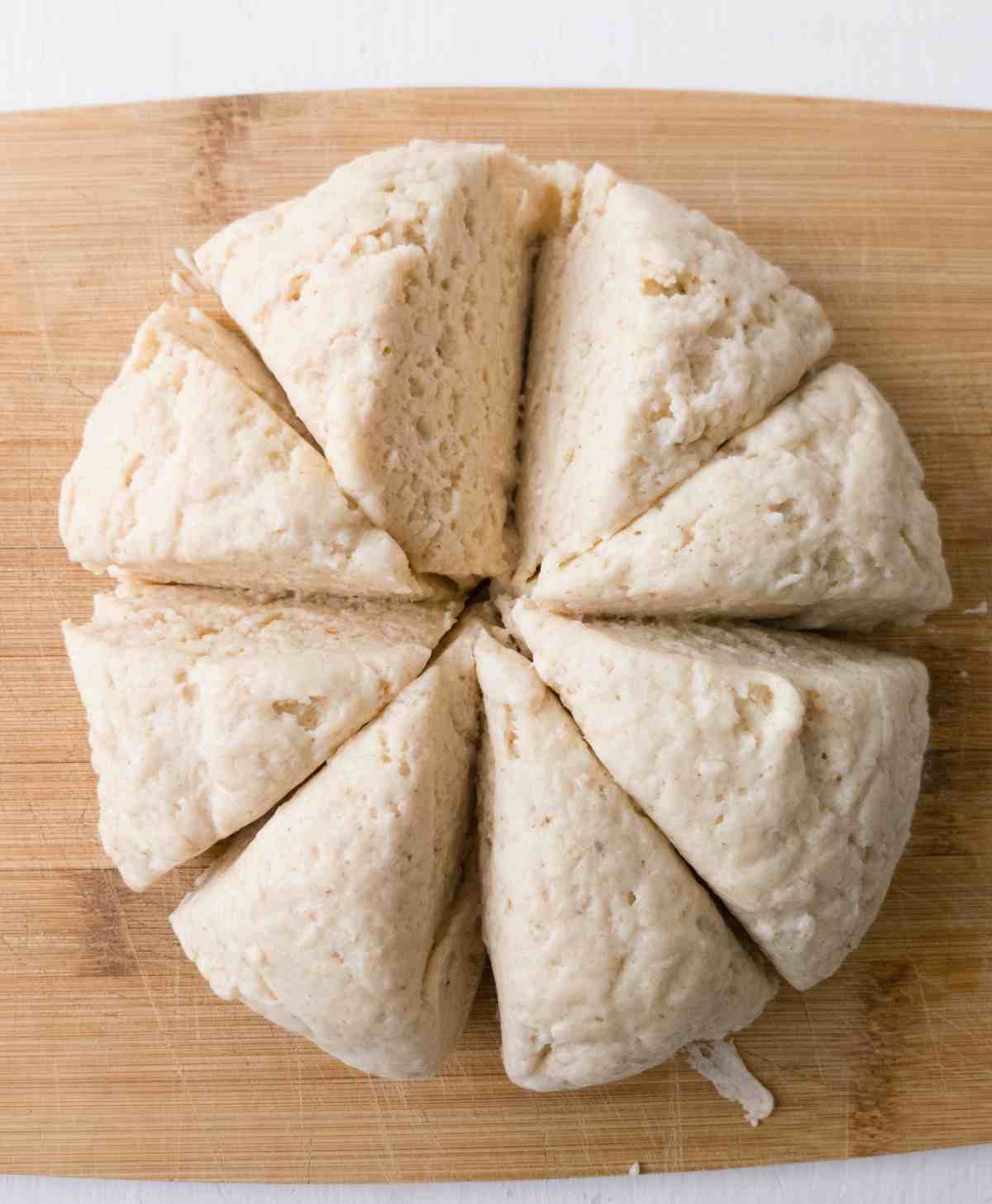
Turn the dough over onto a lightly floured surface and shape it into a ball.
Divide the dough into 8 equal pieces (mine were about 100g each).
Step 6
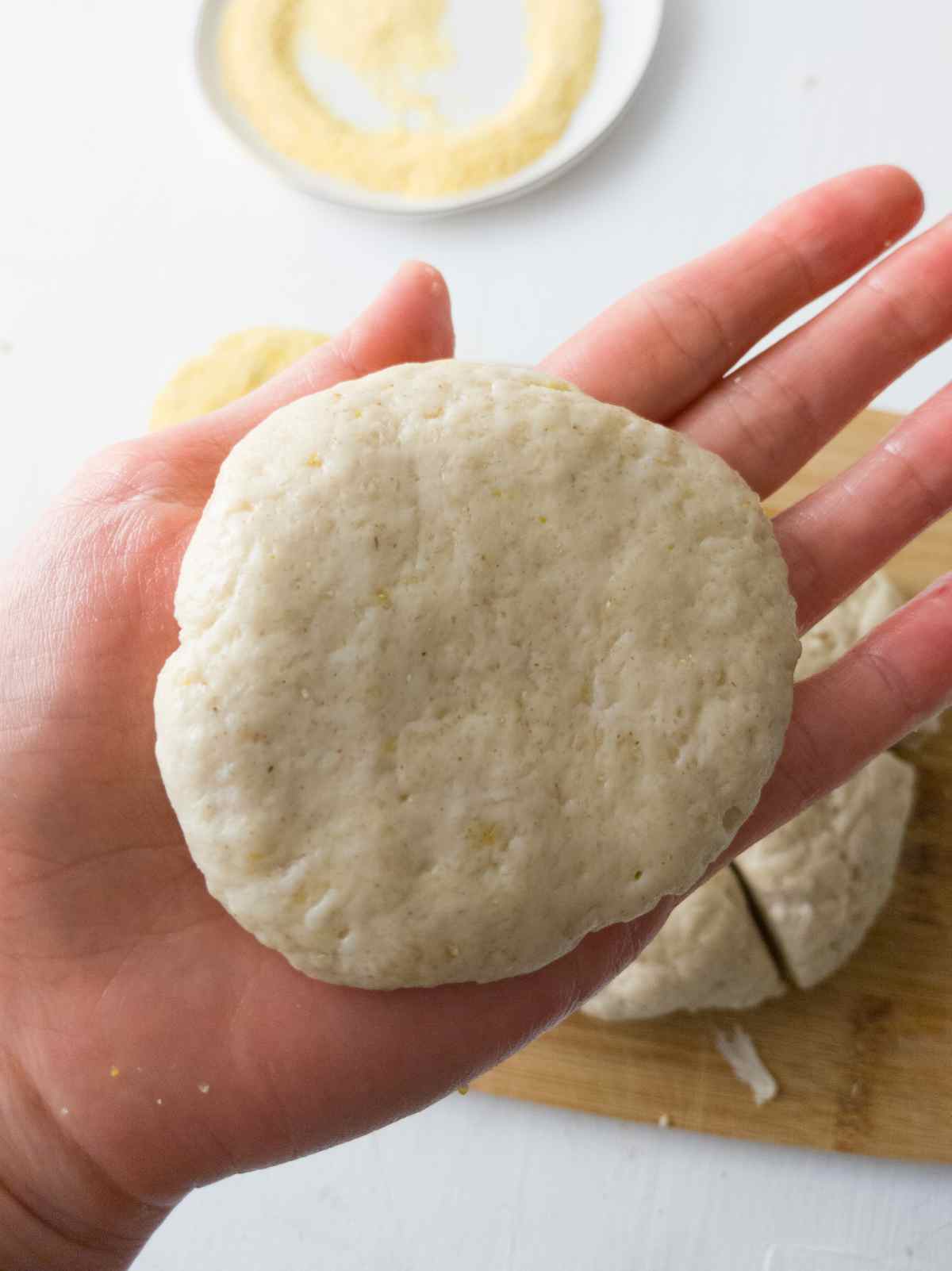
Grease your hands with oil to prevent sticking and shape each piece into a small ball, then slightly press into a disc.
Step 7
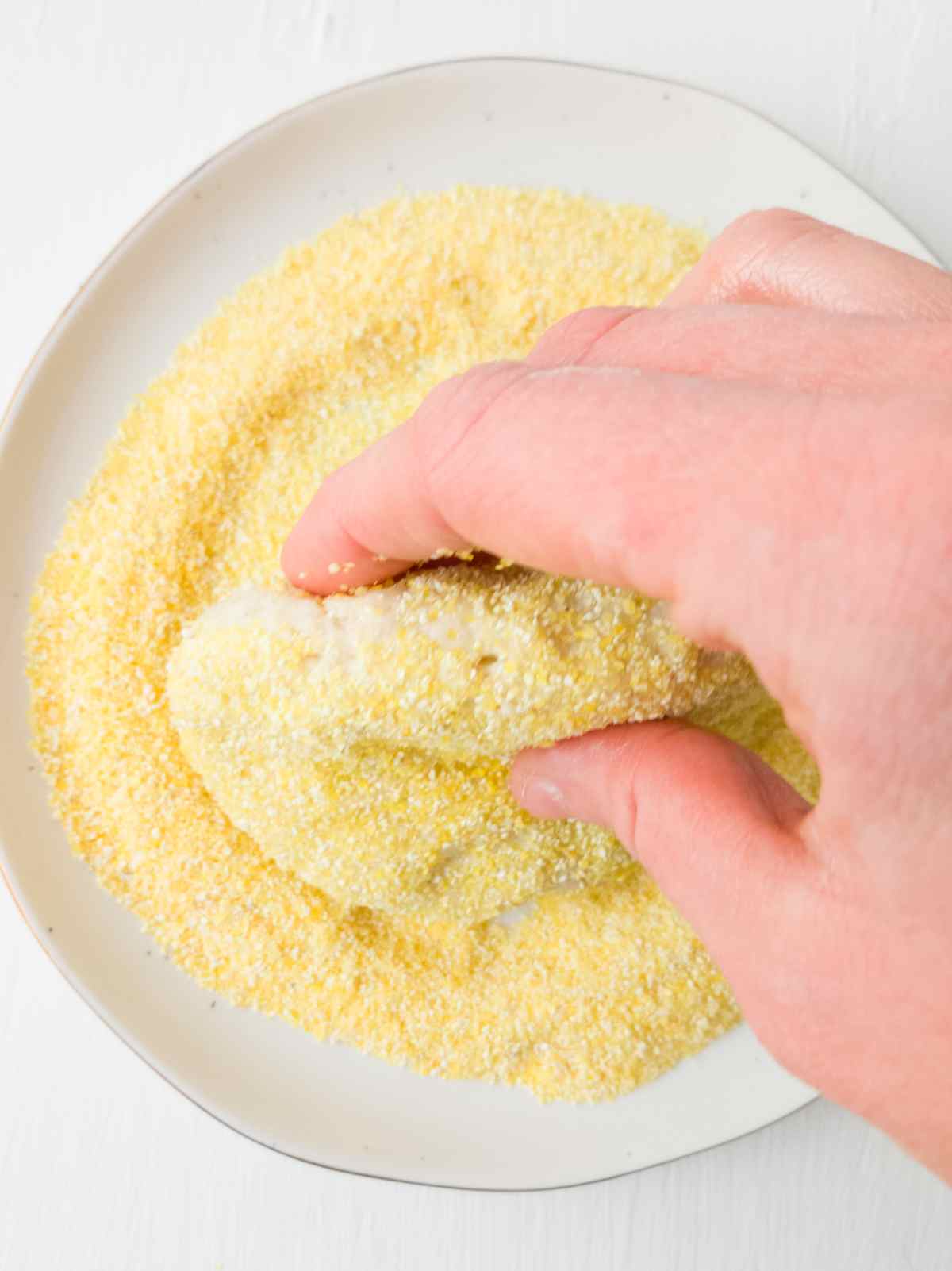
Dip both sides of each muffin in cornmeal to prevent sticking when cooking.
Step 8
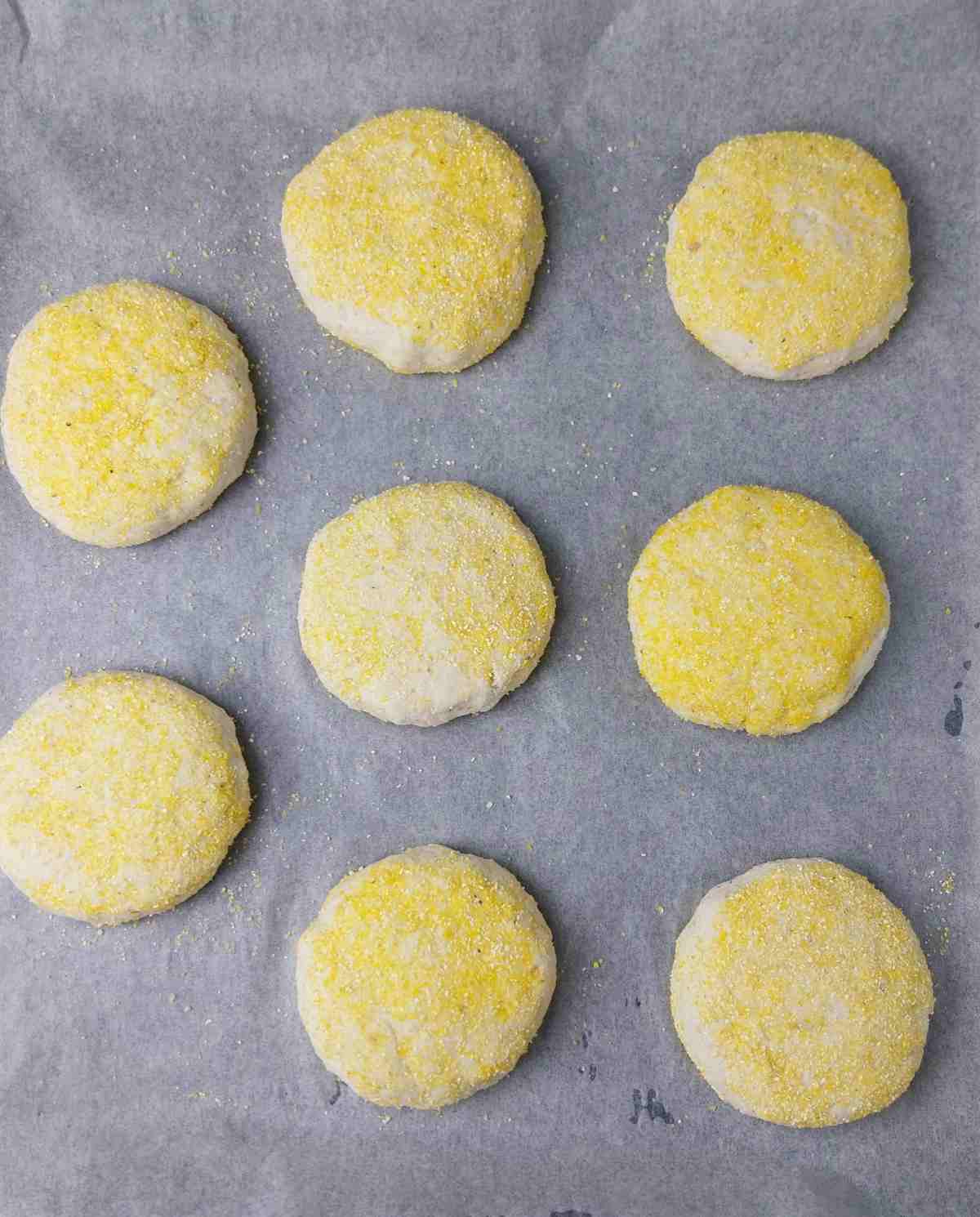
Place the shaped muffins onto a baking sheet lined with parchment paper and leave to ferment for 3.5-5 hours (or overnight in the refrigerator).
If you are using instant yeast you only need to proof for 1-1.5 hours.
Step 9
Preheat a cast iron pan or griddle over low heat for a few minutes. Don't add any oil or grease to the pan!
Fry each muffin for 10-11 minutes on each side over low heat until deep golden brown.
Let the muffins cool completely before slicing them! If you slice them too soon, they will be sticky on the inside.
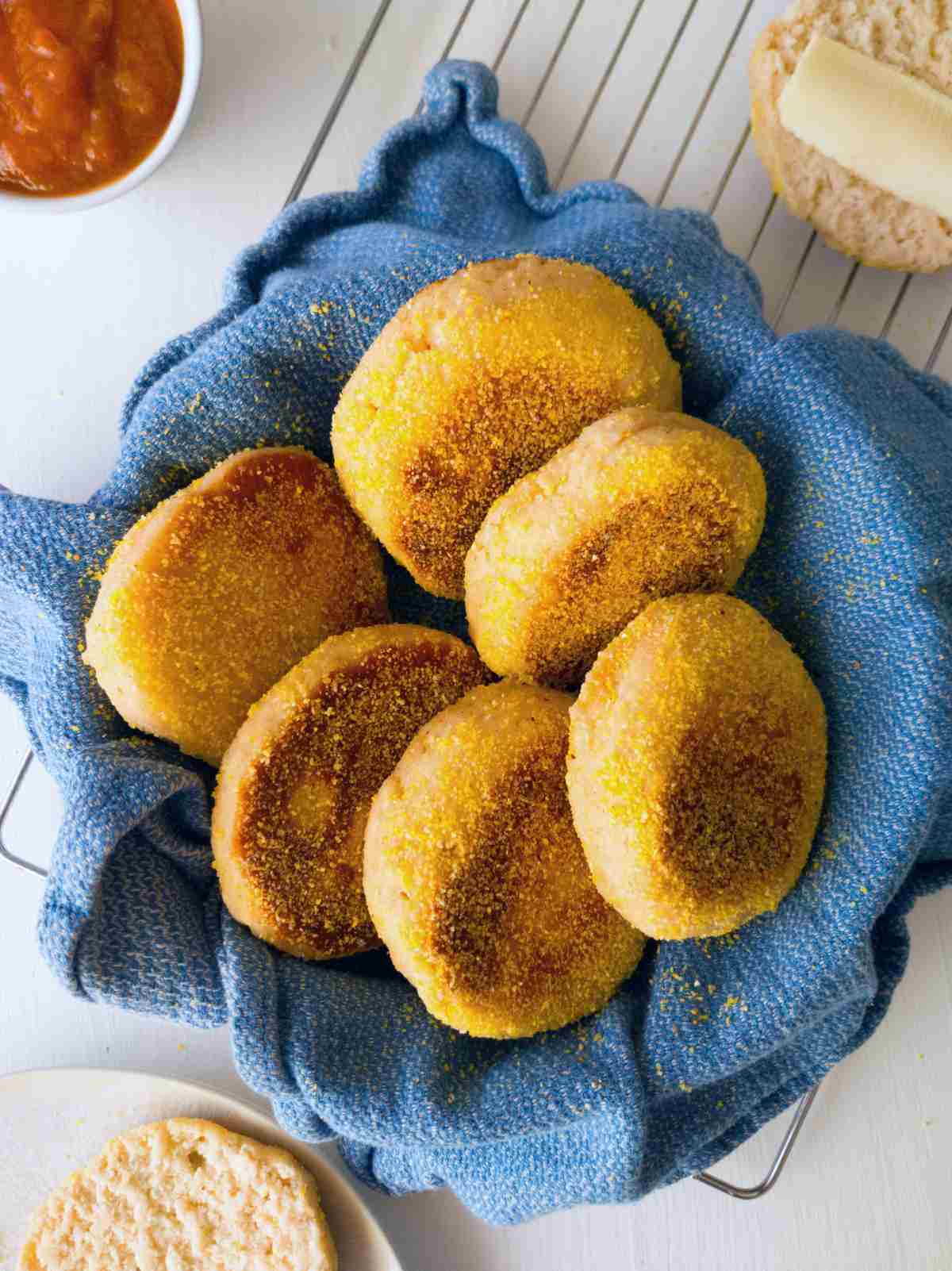
Storing & freezing
Store these muffins in the refrigerator for up to 5 days and reheat before eating.
You can freeze these muffins in a freezer bag or an airtight freezer container for up to 3 months. To defrost, simply pop them into the microwave for 30 seconds or reheat in the oven at 350F/175C until soft and warm!
Expert Tips
- Use a mature starter, meaning a starter that was fed a few hours ago and is rising and bubbling. It will help with fermentation and airy texture in the muffins!
- Use a cast iron pan to help the muffins cook through before the sides get too brown! Non-stick pans don't transfer heat as well as cast iron does. However, if you don't have a cast iron pan or griddle, a non-stick pan will do, it just might need more time to cook through.
- Grease your hands with oil before shaping English muffins as the dough will be sticky. Don't add extra flour to the surface or to your hands!
FAQ
Make sure you cook your English muffins over low heat for a longer time. Cooking them quicker at a higher heat will result in a gummy center.
More gluten-free sourdough breakfast ideas!
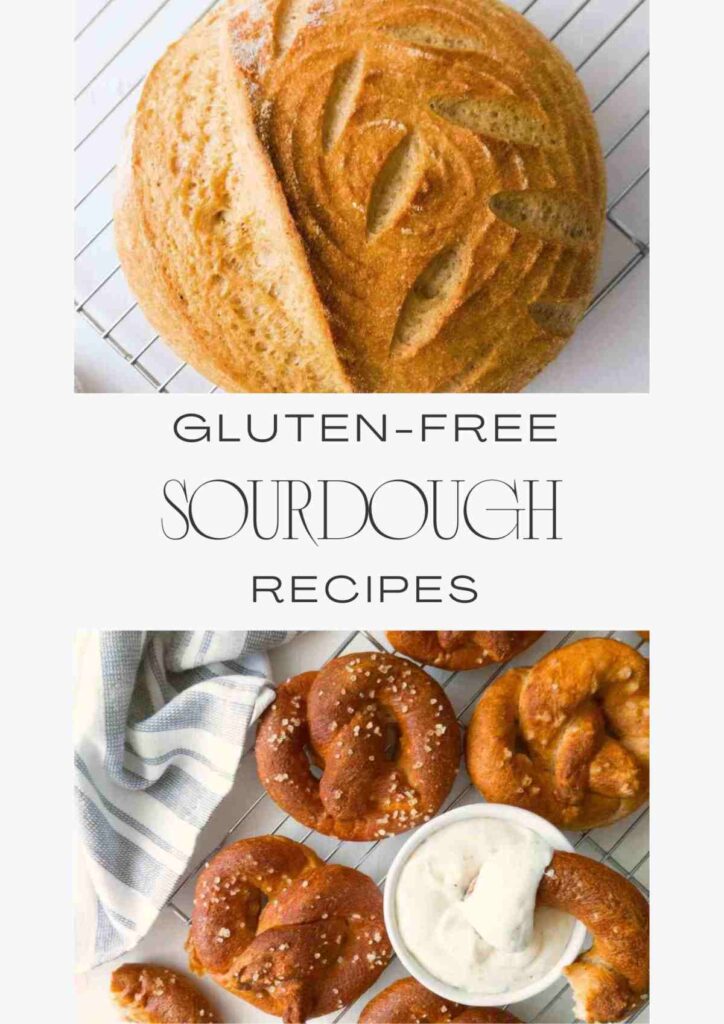
Get my GF sourdough recipes eBook
The top 16 recipes of 2024!
📖 Recipe
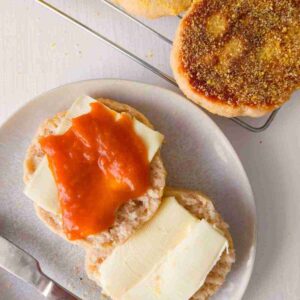
Gluten-Free Sourdough English Muffins
Ingredients
- 15 grams psyllium husk If using psyllium powder, use 13 grams. For more details read my psyllium husk for baking post.
- 250 grams (1 cup) water room temperature
- 75 grams (⅓ cup) plant-based milk or regular milk
- 2 teaspoon sugar or maple syrup/honey
- 2 tablespoon oil any vegetable or seed oil
- ½ cup (140g) gluten-free sourdough starter If you are using starter discard, add 7g of instant/active dry yeast or 20g of fresh yeast
- 286 grams (2 cups) gluten-free flour I am using my homemade blend with brown rice flour which for this recipe would be: 73g brown rice flour, 70g white rice flour, 143g starch of choice (cornstarch/tapioca/arrowroot/potato)
- 2 teaspoon baking powder check the package to make sure it is gluten-free
- 10 grams (2 tsp) salt
- cornmeal for coating optional
Instructions
- In a medium-sized bowl combine psyllium husk, milk, water, oil, and sugar. Whisk to combine and set aside to let the psyllium gel form.
- Combine the dry ingredients in a separate bowl and mix to incorporate.
- Once psyllium gel has formed (1-2 minutes after you mixed it), add the sourdough starter, and stir to incorporate. If you are using starter discard, add 7g of instant yeast (not active dry).
- Add the dry ingredients to the wet ingredients and mix using your hands or an electric mixer with the dough hooks.
- Turn the dough over onto a lightly floured surface and shape it into a ball. Divide the dough into 8 equal pieces (mine were about 100g each).
- Grease your hands with oil to prevent sticking and shape each piece into a small ball, then slightly press into a disc.
- Dip both sides of each muffin in cornmeal to prevent sticking when cooking.
- Place the shaped muffins onto a baking sheet lined with parchment paper and leave to ferment for 3.5-5 hours (or overnight in the refrigerator). If you are using instant yeast you only need to proof for 1-1.5 hours.
- Preheat a cast iron pan or griddle over low heat for a few minutes. Don't add any oil or grease to the pan! Fry each muffin for 10-11 minutes on each side over low heat until deep golden brown.Let the muffins cool completely before slicing them! If you slice them too soon, they will be sticky on the inside.

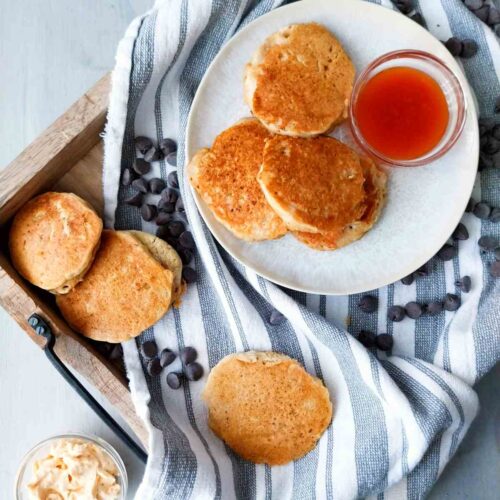
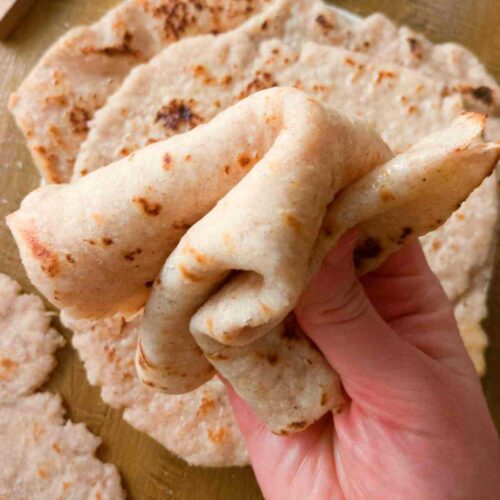
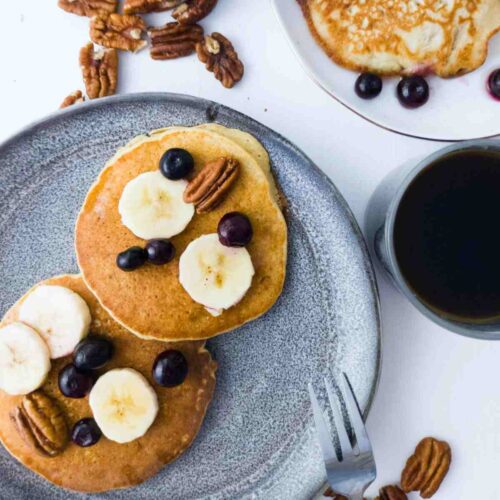
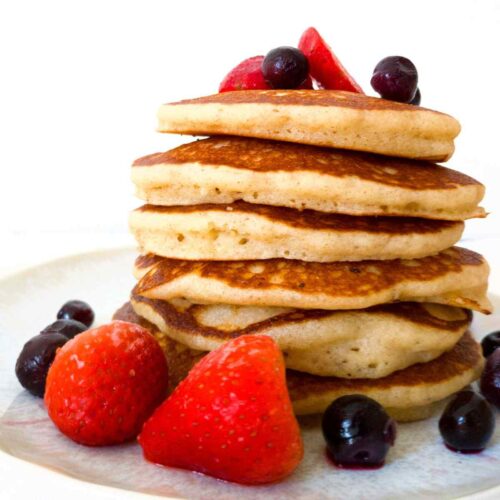
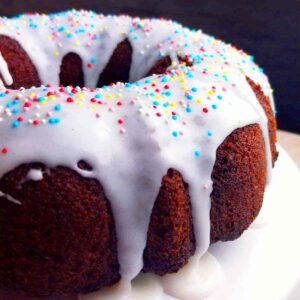

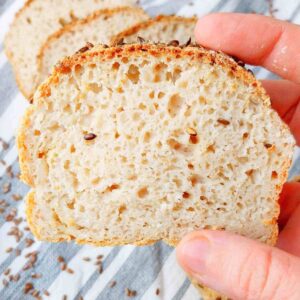
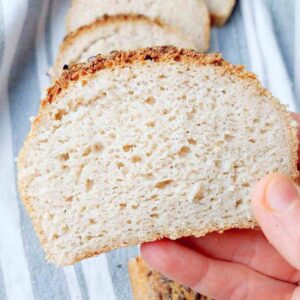
Sheryl
Looks good! I wonder if I can also put sausage or ham in it?
Natashashome
Absolutely!
Kelsey
Is the water supposed to be mixed in with the wet ingredients? It’s listed as an ingredient but isn’t mentioned in the steps!
Natasha Levai
Thank you so much for your comment! I just fixed the instructions. Yes, add the water to the wet ingredients!
Sarah Mazzulla
You mention gluten-free flour - should that be bread flour? All Purpose flour? Or doesn't it matter?
Natasha Levai
You can use either flour! I am always using my homemade blends but I don't want to limit people to only those blends. You can use any type of GF flour blend, just keep an eye on the texture of the dough. If it is so wet that it is not workable even if you grease your hands, then add a little bit more flour as your blend might be a bit less absorbent than mine 🙂
Brynne
Good afternoon! I made this recipe a few weeks ago. They looked amazing when they were done but flattened out when they cooled. The flavor was still good but they were so flat they were hard to cut. Did I over cook them? Thank you!
Natasha Levai
Try adding more baking powder!
Barb
Absolutely love this recipe! Just an observation-the milk or plant-based milk at 1/3 cup doesn't change when you go to two times or three times the recipe. Since you have everything else in metric, perhaps you could eliminate that so as not to cause confusion. I had to do a double take so as not to mess up. Thank you again for a wonderful and delicious gluten-free English muffin recipe.
Jill
Does it matter if the gf flour blend has xanthan gum?
Natasha Levai
Hi Jill! Yes, you should use a blend without xanthan gum. Extra xanthan gum in the dough might contribute to gumminess!
Shannon Escandon
Is the yeast added to the dry ingredients and then should I be worried about temp of the wet ingredients before incorporating them? I'm afraid this isn't going to rise or work out because I got confused switching between weight and volume measurements, hoping I can save! Thanks for any tips!
Natasha Levai
Hi Shannon! If you are using instant yeast, you can incorporate it in either dry or wet ingredients (make sure they aren't hot). If you are using active dry yeast, you will need to activate it by adding it to the warm milk the recipe calls for and letting it sit for 10 minutes. Then, proceed with the recipe!
Kambri
I have tried these things 5X I can’t figure out how to make them not undercooked/gummy.
Natasha Levai
Is there xanthan gum in your flour mix already? Try reducing the liquid in the recipe and making the English muffins smaller/flatter to give it better chances of cooking through.
Amy
I just made here today. One suggestion is to change the ingredients to all be weight measurements, or all be by volume.
My muffins looked great when frying but then got flat when sitting on the pan to go in oven. I’ll try the extra baking powder but it seems like they really settle and shrink even during the cooking after the oven. Tips?
How should I store these? In the fridge?
LB
Hello, I made these a few weeks ago and they were great! I tried again today and noticed the instructions were a bit different and the dough is so wet? I added a lot of extra flour and it's still so soft, basically impossible to make into discs to rise. Did something in the recipe need to change when the instructions changes?
Natasha Levai
Yes! I added more water to the recipe because when I made it again, it seemed to be too dry and other people were saying they get gummy muffins. But you can reduce the water if that what works best for you!